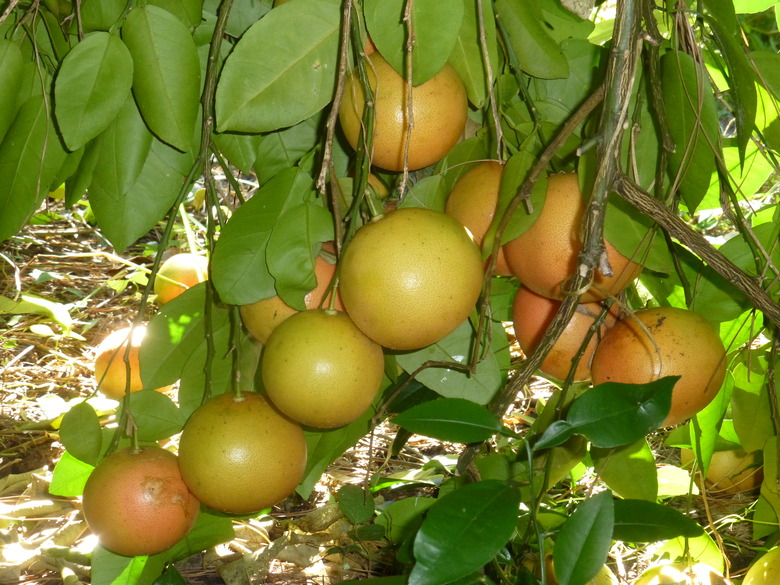How To Trim A Grapefruit Tree
If you have inherited an overgrown grapefruit tree, you'll want to get out your pruners, but in general, citrus trees, including grapefruit trees, lemon trees, lime trees and orange trees, need little pruning.
Grapefruit trees (Citrus x paradisi, USDA growing zones 9 to 11) do, however, require maintenance pruning to remove suckers or damaged wood.
Growing Requirements
Grapefruit trees are both sun- and warmth-lovers and will not tolerate shade. Grow them in full sun in well-draining soil with a pH of 5 to 6 ideally, although they can manage in more alkaline soil if they are properly fertilized.
Some grapefruit varieties have pale yellow flesh, and some have pink, white or deep red; some have seeds, and some are seedless. Regardless of the variety, basic grapefruit tree care entails some pruning.
Why You Should Prune a Grapefruit Tree
Many of the reasons to prune other deciduous trees don't apply to citrus fruit trees. For one, citrus wood is naturally stronger than many other deciduous trees, so these trees don't need to be pruned to avoid branches breaking under a heavy load of fruit.
They also are able to produce fruit within a mostly shaded canopy, so they don't need pruning to improve sunlight access to the center of the tree.
So why prune grapefruit trees? There are several good reasons, but none of them are intended to shape the tree. Instead, pruning benefits the tree's long-term health.
How to Prune a Grapefruit Tree
Successful pruning of a grapefruit tree is in the details, but these details are important.
Tip
Avoid pruning young seedlings while they have a chance to develop their branch structure and become established.
Remove Sprouts and Suckers
Young trees need some initial pruning to remove suckers that grow below the bud union (where the graft was attached to the trunk), which ensures the tree's energy goes into the grapefruit tree and not the rootstock. This location should be obvious due to a change in color and texture, and it might also be a different circumference.
Warning
Suckers allowed to grow from the rootstock usually have a lot of thorns and produce undesirable fruit. More importantly, they grab energy from the desirable grapefruit tree.
As trees become established, they are less likely to develop suckers from the rootstock, but when over-pruned, they may develop "water sprouts," an excess of sprouts that arise perpendicularly from a branch and grow straight up. These are unsightly and unproductive, and they should be removed.
Remove Crisscrossing, Damaged or Dead Growth
Citrus is intolerant of frost and freezes, and if grown on the edge of its plant hardiness zones, may need winter protection when cold weather threatens. **If your tree has freeze damage, you'll need to remove the affected branches.**
In addition, **watch out for branches that crisscross or touch other branches.** Crisscrossing branches within the tree canopy can create an overly shaded environment that invites disease and impairs fruit production, as can branches that touch or lean on other branches.
**Some growers remove low-hanging branches, which is called "skirting."** This exposes the trunk and can be considered more aesthetically pleasing than a tree with branches that sweep the ground. However, most experts recommend removing these low branches only to allow access to the area under the tree or to the interior of the tree.
When to Prune a Grapefruit Tree
Prune suckers as soon as you see them, whatever time of year it is, especially on young trees. **This might be as often as once a month.** Never allow these to get large enough that you need a saw; a simple hand pruner should be sufficient.
For more extensive pruning, the season is important. If your tree is located in a desert location, prune in the spring before flowers appear, usually from February through April. In the colder end of a grapefruit's growing zones, prune a bit later to avoid cold damage to new cuts, starting in March or so.
Pruning in late winter or early spring gives the tree a chance to produce more foliage, which will protect the newly exposed wood from sunscald.

